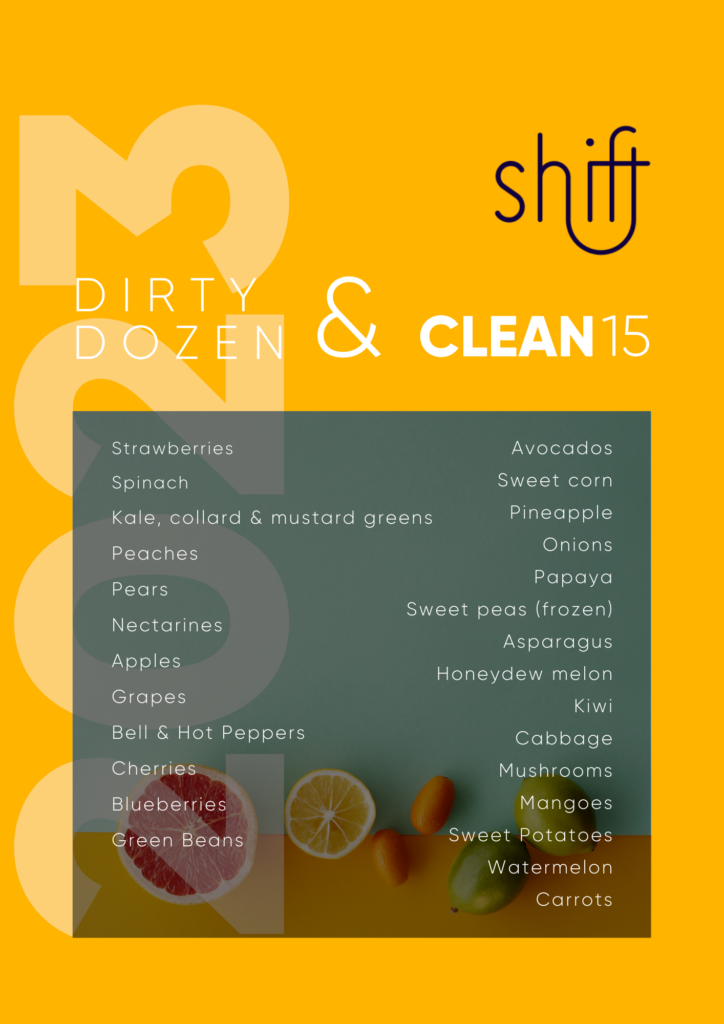
If you’ve been following me for a while you’ll know that I’m passionate about organic food. Eating 100% organic is not always possible – for reasons like budget constraints or unavailability.
Every year a study is conducted to evaluate the levels of pesticides and herbicides in conventional fruit and vegetables in the US. In Australia, our farming practices are similar to that of the US so this can be used as a general guide when buying conventional produce to avoid the most chemical-laden foods.
The fruit and vegetables with the highest amounts of pesticides are called the ‘dirty dozen’. The foods with the least amount of pesticide residue are called the ‘clean fifteen’. Here is a summary of this year’s report:
The Dirty Dozen
Avoid these foods if possible – or buy organic.
- Strawberries
- Spinach
- Kale, collard, and mustard greens
- Peaches
- Pears
- Nectarines
- Apples
- Grapes
- Bell & Hot Peppers
- Cherries
- Blueberries
- Green Beans
The report noted in particular:
Every nectarine sample and 99% of apple samples tested positive for at least one pesticide residue.
The average potato had more pesticides than any other food, by weight.
A single grape contained 15 pesticides.
Single samples of celery, cherry tomato, sugar snap peas, and strawberries had 13 different pesticides in them.
The Clean Fifteen
These foods contain little residues of pesticides and rarely contain more than 1 pesticide.
- Avocados
- Sweet corn
- Pineapple
- Onions
- Papaya
- Sweet peas (frozen)
- Asparagus
- Honeydew melon
- Kiwi
- Cabbage
- Mushrooms
- Mangoes
- Sweet Potatoes
- Watermelon
- Carrots
The report noted that:
Avocados were cleanest – only 1% of avocado samples had any detectable pesticides.
89% of pineapples, 82% of kiwi fruit, 80% of papayas, 88% of mangoes and 61% of rockmelons had no residues.
No single fruit from the clean 15 tested positive for more than 4 different pesticides.
Only 5.5% of the clean fifteen samples had two or more pesticides.
So what does this mean?
Eating organic is always the safest way to go – but if you simply can’t avoiding fruit and vegetables in the dirty dozen is a good place to start to reduce your intake of pesticides.
To view the full report – visit the environmental working group website.



